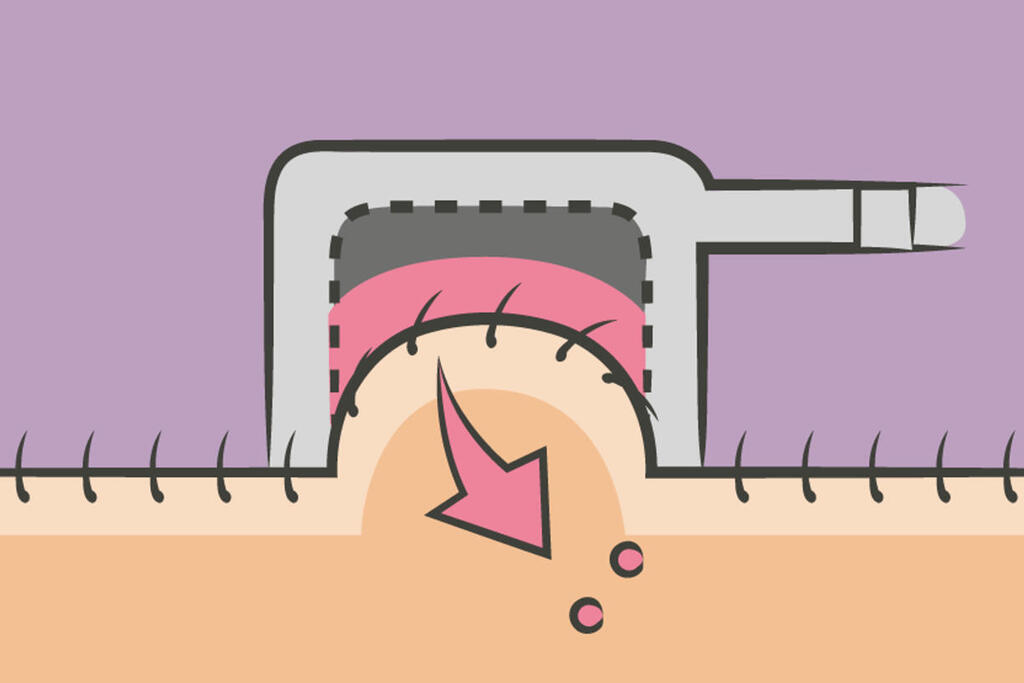
« Cancer du sein localisé : faire mieux pour les patientes avec moins de coûts pour la société est possible ! »
www.latribune.fr
Dec. 22, 2025, 6:35 p.m.
Avec 12 000 décès annuels en France, le cancer du sein reste la tumeur la plus meurtrière chez la femme. Les tests de séquençage génomique permettent désormais d’éviter une chimiothérapie inutile à de nombreuses patientes. Pourtant, leur remboursement incomplet freine leur usage, créant des inégalités d’accès aux soins.
Share on

Cancer du sein : une thérapie CAR-T de nouvelle génération pourrait changer la donne
archipeldessciences.wordpress.com
Dec. 20, 2025, 5:46 p.m.
Des chercheurs ont développé une thérapie CAR-T à base de cellules tueuses naturelles (« natural killer », NK), qui s’est montrée plus efficace que les immunothérapies actuelles contre le cancer du sein triple négatif à un stade avancé – la forme la plus agressive de cancer du sein. La thérapie peut être produite en masse à partir de dons de cellules souches sanguines, ce qui réduirait considérablement son coût de développement. Sa polyvalence permettrait aussi de l’utiliser contre d’autres types de tumeurs solides.
Share on

Arriver: Changing How Respiratory Tract Conditions Are Treated
airiver.com
Dec. 15, 2025, 8:38 a.m.
Airway stenosis represents the most common airway complication following lung transplantation, affecting between 7% and 18% of patients. Idiopathic subglottic stenosis is a rare condition, mostly affecting women, with an estimated incidence of 1 in 400,000 people. There are ~100,000 tracheo-bronchial stenting and dilation procedures performed annually within the United States.
Share on

Airiver Medical Gets OK for Study of Chronic Rhinosinusitis Tx
respiratory-therapy.com
Dec. 15, 2025, 8:31 a.m.
Airiver received investigational device exemption approval from the US FDA to begin a pivotal clinical trial of the Airiver ESSpand Sinus Drug Coated Balloon in patients with chronic rhinosinusitis.
Share on

Cancer du sein : le grand détournement d’Octobre rose !
www.passeportsante.net
Oct. 11, 2025, 9:32 p.m.
Chaque automne, Octobre Rose remet sur le devant de la scène la lutte contre le cancer du sein. Mais derrière la noble cause, certaines marques surfent sur la vague rose pour booster leurs ventes. L’UFC-Que Choisir dénonce cette année encore une multiplication d’opérations commerciales douteuses, où le symbole de solidarité devient un argument marketing.
Share on

Brouillard cérébral après thérapie CAR-T : une étude révèle les effets cognitifs
www.nouvelles-du-monde.com
Oct. 10, 2025, 3:36 p.m.
L’équipe de recherche a découvert que la thérapie CAR-T peut activer de manière excessive les cellules microgliales dans le cerveau. Ces cellules, normalement chargées de la défense immunitaire cérébrale, deviennent hyperactives et perturbent les fonctions cognitives. Dans des expériences sur des souris, les chercheurs ont démontré que l’épuisement temporaire de ces microgliales activées, sur une période de deux semaines, permettait de restaurer les capacités cognitives des animaux.De manière surprenante, après cette période d’épuisement, les microgliales revenaient à un état normal et non réactif.
Share on

MediView Secures $24M for Augmented Reality Guided Surgery
hitconsultant.net
Oct. 10, 2025, 3:04 p.m.
MediView’s FDA-cleared surgical navigation and imaging platform empowers clinicians with “X-ray vision”—the ability to see a patient’s internal anatomy through their skin in full 3D context, overlaid directly onto their body. This technology simplifies procedures and expands access to less invasive care.Current medical imaging systems force physicians to translate 2D images into 3D mental maps, creating a cognitive burden and disrupting natural hand-eye coordination. MediView replaces this limitation by fusing 3D CT scans with live ultrasound, enabling real-time, interactive visualization of organs, tissue, vasculature, and target anatomy like tumors.
Share on

HMB is more common than asthma or diabetes, yet often ignored
news.harvard.edu
Oct. 8, 2025, 3:45 p.m.
Women with heavy menstrual bleeding wait five years on average for care. Wyss technology could change that.
Share on

Vaccination : une ventouse pour se passer d’aiguilles
www.lemonde.fr
Sept. 27, 2025, 7:25 p.m.
Un dispositif d’aspiration de l’épiderme accroît sa perméabilité et entraîne une production d’anticorps plus efficace que lors d’une injection sous-cutanée.
Share on

Assurance-santé : ces villes qui lancent leurs propres mutuelles
www.lesechos.fr
Sept. 13, 2025, 2:31 p.m.
Dans plusieurs milliers de communes, les habitants peuvent bénéficier de complémentaires santé aux tarifs et prestations négociés par les collectivités locales. La formule des mutuelles dites « communales » connaît des succès variables.
Share on

Weight loss drugs protect heart patients
news.harvard.edu
Sept. 3, 2025, 3:12 p.m.
Despite promising results from existing randomized controlled trials of semaglutide and tirzepatide in those with obesity-related HFpEF, regulatory authorities and professional societies have not approved or endorsed the use of these drugs for HFpEF, due in part to the studies’ relatively small sample sizes and unknown generalizability. The researchers therefore used data from three large U.S. insurance claims databases to emulate two previous, placebo-controlled trials of semaglutide and tirzepatide in new study populations that were an average of 19 times larger than those previously evaluated.
Share on

Electrospun Scaffolds for Tissue Engineering
www.mdpi.com
Aug. 31, 2025, 9:42 a.m.
Electrospinning is a highly valuable technique known for its simplicity and versatility in producing 1D nanofibers, 2D nanofiber membranes, and highly porous 3D fiber structures. It can be combined with other methods to create biomimetic scaffolds, offering a wide range of possibilities in biomedical applications, drug delivery, and regenerative medicine. This technique utilizes both natural and synthetic polymers, as well as nanostructuring and scaffold properties, to achieve the desired outcomes.
Share on

Chinese "Agent Hospital", World's first AI Hospital, is transforming healthcare
med-tech.world
Aug. 29, 2025, 10:56 a.m.
Tsinghua’s Agent Hospital was made up of 14 AI doctors upon launch. At its core, is MedAgent-Zero, the self-evolving AI framework developed by the University’s AIR (Institute for AI Industry Research). Moreover, in November of 2024, the “Zijing AI Doctor” was launched. Developed by a Tsinghua University spin-out start-up, Zijing Zhikang, to serve as the core component in AI Agent’s ecosystem.1 The system features 42 AI doctors across 21 clinical specialties, covering over 300 diseases. Furthermore, each specialty has trained its virtual agents on over ten common conditions. And finally, by creating a pool of half a million synthetic patient cases to test and evolve diagnostic accuracy. These AI doctors can treat 10,000 patients with 93% accuracy in a matter of days, a feat that would take real doctors years to complete.
Share on

How does vitamin D deficiency affect the immune system?
politiko.al
Aug. 20, 2025, 9:46 a.m.
By studying cells from mice and humans, the researchers found that vitamin D increased the production of CD31 molecules on the surface of dendritic cells, inhibiting T-cell activation.
Share on

US FDA Approval of LENZ Therapeutics' VIZZ™ for the Treatment of Presbyopia
ir.lenz-tx.com
Aug. 15, 2025, 1:46 p.m.
VIZZ is powered by aceclidine, highlighted by its differentiated mechanism of action as a predominantly pupil-selective miotic that interacts with the iris, with minimal ciliary muscle stimulation. VIZZ contracts the iris sphincter muscle resulting in a pinhole effect and uniquely achieves a sub-2mm pupil that extends depth of focus to significantly improve near vision without causing a myopic shift. Aceclidine, the sole active ingredient in VIZZ, is a new chemical entity in the United States and its FDA approval marks a global first in the treatment of presbyopia.
Share on

How Can Medication Management Services Improve Patient Adherence to Prescribed Treatments?
vitalpsychmd.blogspot.com
Aug. 8, 2025, 1:43 p.m.
Medication adherence is a critical aspect of effective healthcare, yet it is often one of the most challenging to achieve. Many patients struggle to follow their prescribed treatment regimens due to various barriers, including complex medication schedules, side effects, and a lack of understanding about their medications. This article explores how medication management services can significantly improve patient adherence to prescribed treatments, ultimately leading to better health outcomes.
Share on

A Technological Framework to Support Asthma Patient Adherence Using Pictograms
www.mdpi.com
Aug. 8, 2025, 1:42 p.m.
Our successful implementation of a development and validation strategy has yielded a robust framework, laying the foundation for substantial progress. All medical instructions and pictograms comprising SIMAP were validated for both their correspondence and comprehension by the patients. Likewise, the SIMAP algorithm has demonstrated an impressive accuracy rate of approximately 96% when tested on medical indications extracted from a clinical dataset. Consequently, we firmly believe that this framework holds immense potential for significantly improving the treatment of asthma patients, thereby promising enhanced healthcare outcomes.
Share on

Leveraging Technology to Improve Patient Adherence and Engagement
jennthepr.com
Aug. 8, 2025, 1:40 p.m.
Improving patient adherence and engagement is essential for effective healthcare delivery. With healthcare providers striving to offer personalized and seamless experiences, technology has become a key driver in achieving these goals. For example, reviewing key patient engagement statistics can reveal how digital solutions are shaping better outcomes, demonstrating the potential they hold in transforming patient-provider relationships.
Share on

Improve Patient Compliance with AR Services
medicalbilling58.wordpress.com
Aug. 8, 2025, 1:40 p.m.
In today’s value-based healthcare landscape, improving patient compliance is essential—especially in anesthesia-related procedures, where follow-up is critical to monitor outcomes and minimize risks. One proven approach to closing this care gap is implementing Anesthesia AR Follow-Up Services. These services not only ensure timely patient engagement post-surgery but also reduce missed communications and optimize billing through thorough documentation and tracking.
Share on

How to Optimize Patient Adherence to Prescribed Interventions
reviewofmm.com
Aug. 8, 2025, 1:39 p.m.
The best myopia management intervention is meaningless if you can’t get your patients to follow your recommendations. Good communication is paramount to optimize patient adherence to prescribed interventions.
Share on